Low Kit: What to Bring
Low Blood Glucose Treatment Kit
Your child will be prepared to deal with a low if he always carries with him (or on you, if he is very young) a Low Blood Glucose Treatment Kit (“Low Kit”). Low blood glucose can occur unexpectedly, anywhere. Being prepared to treat a low with the following items can turn a potential emergency into a minor “hiccup”:
Prepared for a Low:
Your child should have accessible to her, at the minimum:
- Blood glucose monitor, test strips and lancing device.
- Rapid-Acting Carbohydrate: enough to treat 2 low blood sugars
- Candy containing glucose or dextrose, or
- Drink such as regular pop, juice, or Gatorade®
- Medical ID (bracelet, necklace, etc)
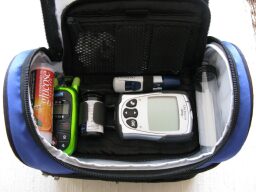
More on rapid-acting carbohydrates:
Prepared for Anything:
To make longer outings smooth sailing, in addition to the minimum supplies listed above your child could also bring along:
- Snacks such as granola bars, cookies, and crackers which can be used to prevent a low when blood glucose is falling gradually, or when exercise has increased the demand for glucose in the body.
- Hand Wipes or Alcohol swabs (for finger pokes when hand-washing is not possible on-the-go)
- Glucagon, for the treatment of a severe low
- Glucagon should be stored at room temperature (between 15-30 C). It should not be left in a hot car, nor a sports bag during hot weather (or in a freezing car or freezing hockey rink, at the other extreme). If you decide to carry Glucagon with you, take care to maintain this temperature range. In hot weather, you could store it in:
- A cooler or small insulated zipper bag with an ice pack, or
- In a wide-mouth thermos bottle with an ice cube, or
- In a Frio® insulin wallet
- If you will be in a remote location or one in which 911 emergency medical services will not be readily available (camping; a driving trip across the prairies or other rural areas; on an airplane), most diabetes experts STRONGLY RECOMMEND carrying Glucagon with you.
- Glucagon should be stored at room temperature (between 15-30 C). It should not be left in a hot car, nor a sports bag during hot weather (or in a freezing car or freezing hockey rink, at the other extreme). If you decide to carry Glucagon with you, take care to maintain this temperature range. In hot weather, you could store it in:
More on glucagon:
Tips from the Trenches
We’ve always brought glucagon with us on overnight trips or vacations but now we even bring it for instances such as skiing for the day. We do this because of the length of time it would take to get medical assistance. It’s easier to have it and not use it rather than needing it and not have it. We are just careful to protect it from temperature extremes.
~Danielle
Additional Tips:
- Consider getting an extra blood glucose monitor so that you can leave it in the low kit all the time, making it less likely that the monitor will be left behind in the kitchen drawer.
- Pre-packaged candy is easy to grab and go.
Tips from the Trenches
From Michelle:
Halloween-sized candy is handy. We stock up in the fall, and also find some useful items around Valentine’s day and Easter. You can also check out your local dollar store for similar items throughout the year. We found these small packets of Sweet Tarts at our local drugstore in February, and the Star Wars candy at Dollarama in the summer (they usually have some version of this kind of product year round).
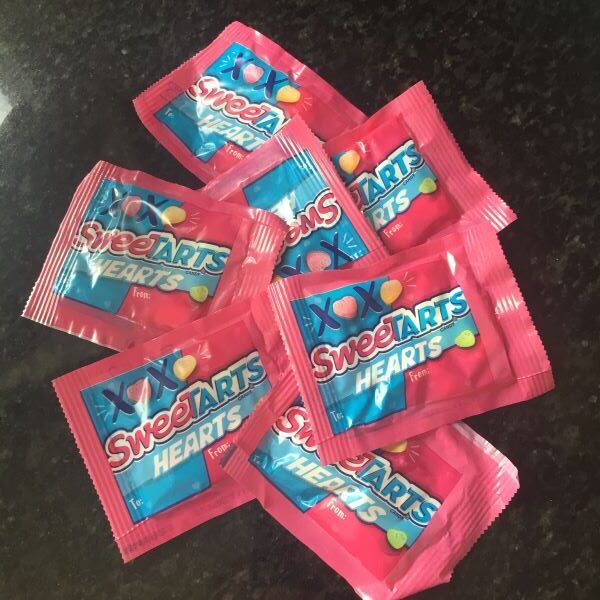
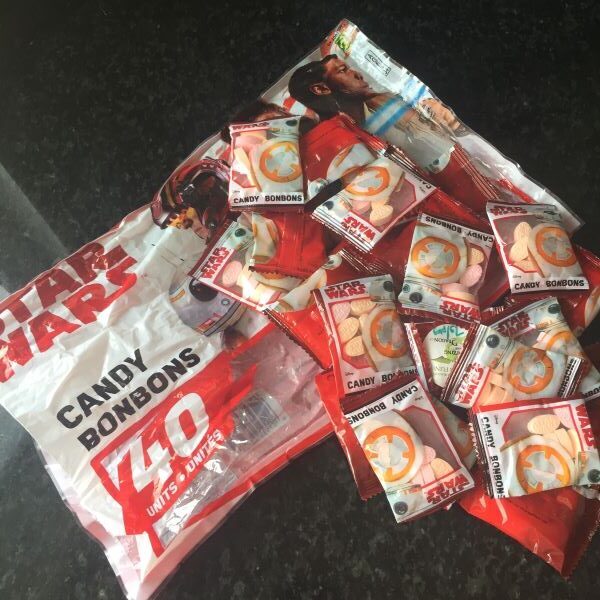
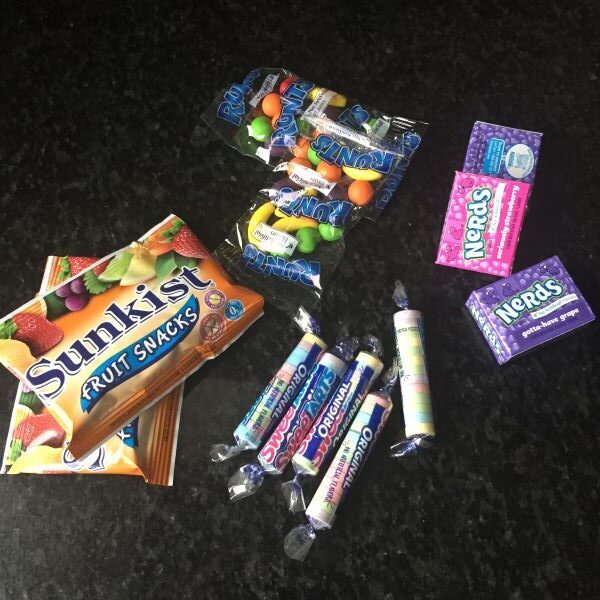
As an alternative to prepackaged candy, you could buy candy or gummies in bulk and then make them portable by storing in small containers. We have used empty test strip containers, vitamin/pill containers, matchstick tubes (normally used to keep matches waterproof while camping, fishing, etc), and small see-through containers. Here’s a sample of our favourites… (each item is shown with a standard 15g low treatment in it)
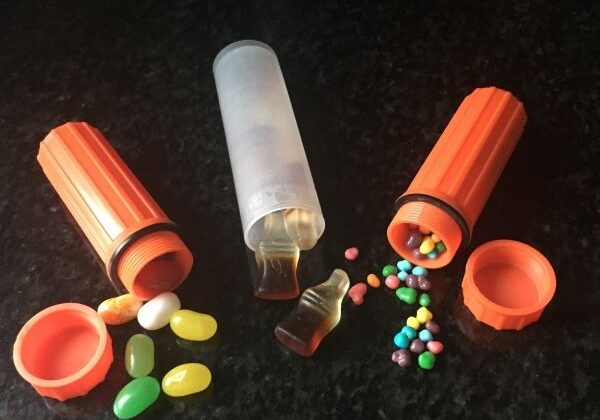
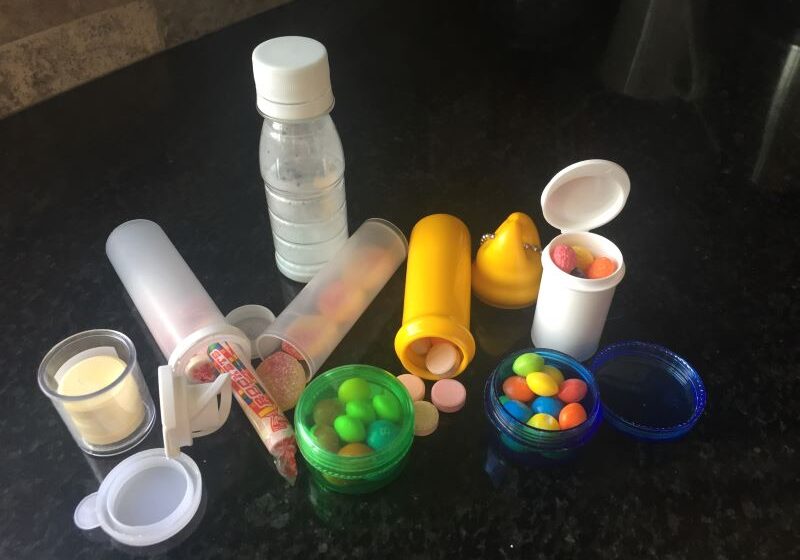
- Although not required for lows, you may also find it helpful to take with you a supply of syringes or insulin pen, pump infusion set/cartridge, and a vial of insulin, in case of an unexpected high blood sugar.
For the Pre-Schooler (from Michelle):
- Our low kit for our preschooler contains both candy and juice, in case my son refuses one or the other during a low.
- We keep all of the above items in a small, insulated, zippered bag. This keeps the items together and (even without an ice pack) guards somewhat against extreme temperatures. When we are headed somewhere, we can just grab it on the way out the door without stopping to gather each item. If it is a very warm day, we add an ice pack just before we leave.
- For convenience, the exact amount of candy needed to treat a low can be kept in your child’s pocket, or in a waist pouch, such as a SPIbelt™. We stash a measured low treatment in my preschool son’s insulin pump case when he is away from us for short periods (ex. preschool, Sunday school, or a walk with Grandma). His caregivers are alerted to its presence and can help him take his low treatment if he is showing signs of a low.
- I keep a list of take-along supplies needed for outings (for lows and highs), taped inside the lid of our insulated bag (a Tegaderm™ over the sticky note works great!). Then I can double check that we have everything we need before we head out the door.
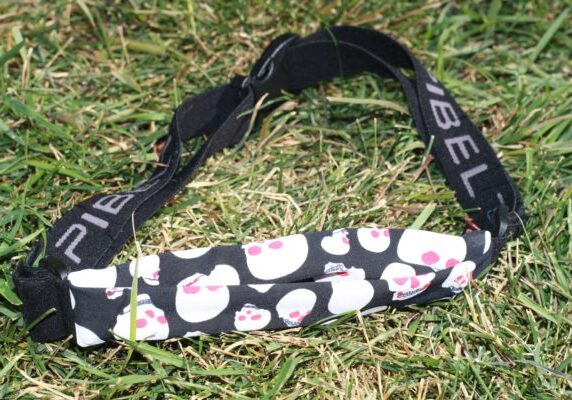
For the Pre-teen (from Danielle):
- Our low kit for our preteen son is carried in his pump case which is with him at all times.
- We/he makes sure he has enough Rockets® to treat 2-3 lows placed in the back of the meter case which is restocked each time before he leaves the house.
- He also carries extra Rockets® in his coat pocket or backpack as a backup if he’s going to be away from us for an extended period or if he’s doing excessive activity such as tobogganing, long walks or bike rides.
For the Teen:
- If it doesn’t fit in a pocket, it likely won’t go with him! Some kids will carry a small messenger bag or purse, which gives more flexibility in terms of how many items to take along.
- A full tube of Dextabs will cover up to 3 lows, and will fit easily into the front pocket of his jeans, in her purse, or in a backpack.
- A BG meter, lancing device and strips will fit in the other pocket.
The above information was reviewed for content accuracy by clinical staff of the Alberta Children’s Hospital Diabetes Clinic.
SHARE THIS ARTICLE